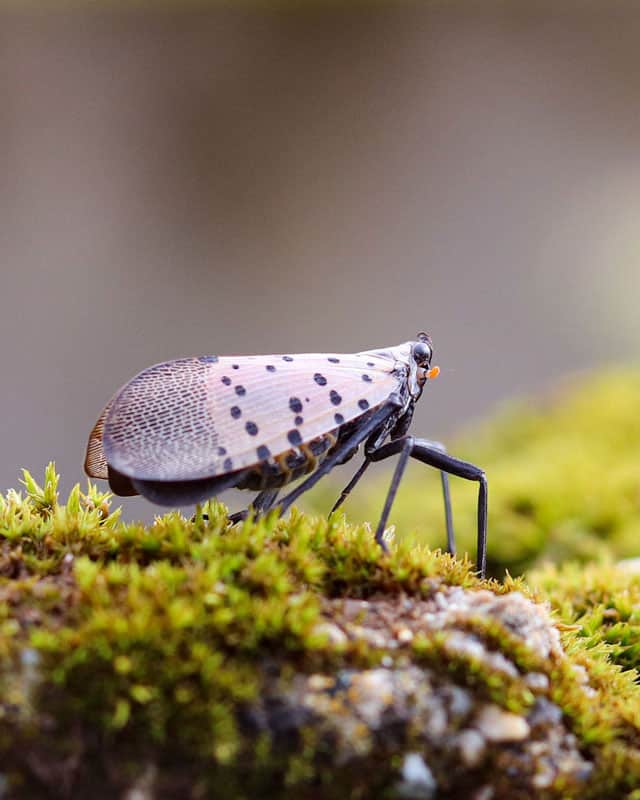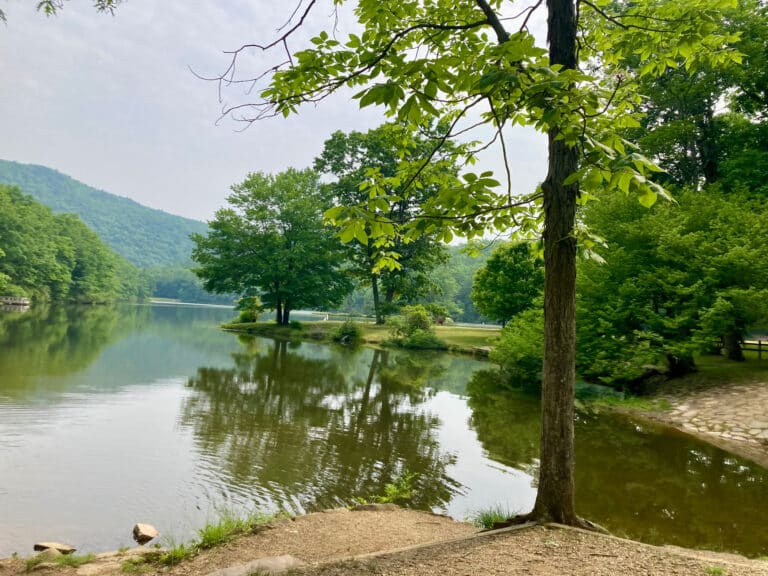As a relatively new Virginian who grew up in Pennsylvania, I know all about the infuriating bug that is a spotted lanternfly. Whether you were out in the farmland areas or in downtown Allentown, the sky, buildings, and ground were covered in the invasive species and not a single local hesitated to stomp on as many as they could. When I read this morning that Virginia is officially on the hit list, I let out a loud and hefty, “&*$%!”
They first popped up in the U.S. in Berks County, Pa., in 2014, the same year I moved away from the area to Virginia for college. The spotted lanternfly, or Lycorma delicatula, has more than 70 host plant species and limited predators, making it easy for them to spread rapidly. With each holiday break I would come home for, the larger the pile of them would get on our deck, and the more my mother started to resemble Rambo with her fly swatter.
“Spotted lanternfly is a serious invasive pest with a healthy appetite for our plants and it can be a significant nuisance, affecting the quality of life and enjoyment of the outdoors,” PennState’s College of Agricultural Sciences stated on their website. “If not contained, spotted lanternfly potentially could drain Pennsylvania’s economy of at least $324 million annually, according to a study carried out by economists at Penn State.”
I was always relieved to come back to Virginia and be reminded that the infestation wasn’t happening everywhere. But in January of 2018, the pesky bug was detected in Virginia. By May the following year, the Virginia Department of Agriculture and Consumer Services (VDACS) announced the establishment of the Spotted Lanternfly Quarantine for Frederick County and the city of Winchester.
Unfortunately, their ability to lay eggs on various vehicles and trains increases their likelihood of spreading. Earlier this summer, they were found in Albemarle County near railroad tracks close to the Rivanna Trail, officially putting the area’s grape, apple, peach, and hops crops at risk.
Training volunteers and monitoring for spotted lanternfly have been critical parts of Virginia Cooperative Extension’s (VCE) eradication efforts. People are urged to report sightings of the insect, take photos, and kill them, along with scraping off or smashing egg masses that are found. Rubbing these egg masses with rubbing alcohol is the most effective way to ensure that they won’t hatch after being scraped off.

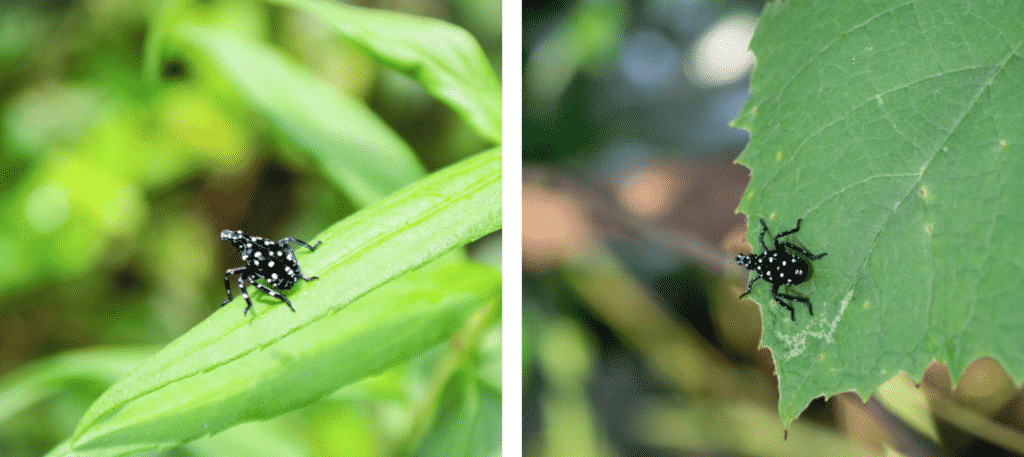
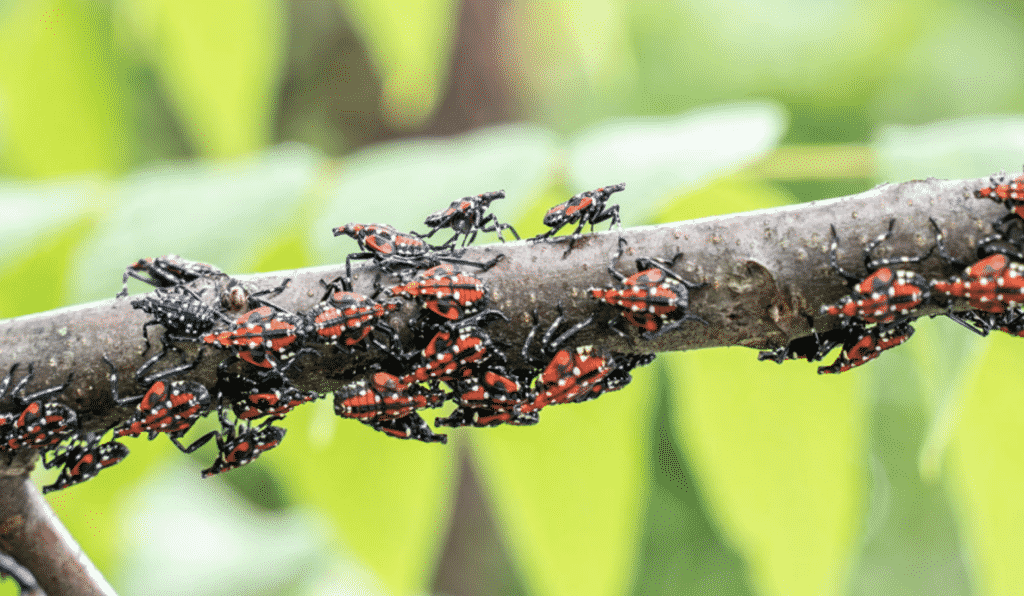
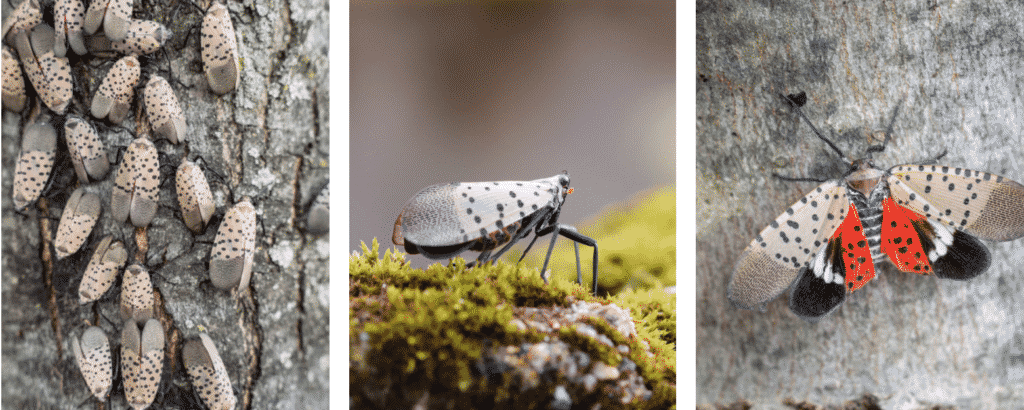
If you are anything like my mother and find that killing and reporting sightings of these frustrating bugs isn’t enough, you can go an extra mile and order praying mantis egg cases to place in your yard. Mantises, along with chickens and my mom, are one of spotted lanternfly’s top predators. I’ll never forget the time I saw a praying mantis chowing down on a spotted lanternfly in the middle of downtown Allentown, working its job the same as the surrounding hustling bustling city people. I wanted to ask it, “workin’ hard or hardly workin’ hey bud?”
The faster we can spread awareness on spotted lanternflies and what to do when we see them, the better chance we will have of protecting our area from them. Learn how to identify, take photos, report sightings, and remember to thank your local mantises for their hard work.
REPORT SIGHTINGS
Photo of adult spotted lanternfly courtesy of Getty Images
